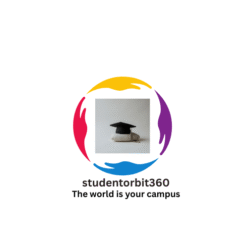As international students plan their education abroad, post-study opportunities — particularly the pathway to Permanent Residency (PR) — play a huge role in choosing the right country. If your long-term goal includes settling abroad after graduation, this guide will help you understand the most PR-friendly countries for international students in 2025, especially for students from South Asia, Southeast Asia, and Africa.
🇨🇦 Canada: The Most Transparent PR Pathway
Canada remains the top choice for international students looking for PR. With a student-friendly visa policy, post-study work permit (PGWP) options, and the Express Entry system, students can transition to PR within 1–3 years post-graduation.
Why Canada?
- Up to 3 years of Post-Graduation Work Permit
- Points-based immigration (Express Entry) favours Canadian education
- Provincial Nominee Programs (PNPs) for specific regions
- Spouse and dependents welcome with work rights
✅ Best for: Indian, Nigerian, Bangladeshi, and Filipino students aiming for long-term settlement.
🇦🇺 Australia: New PR Reforms in 2025
Australia has introduced several changes to its immigration system, making it more favourable for graduates in high-demand fields like IT, Engineering, Healthcare, and Teaching. The Temporary Graduate visa (subclass 485) allows 2–4 years of post-study work, depending on location and qualification level.
Why Australia?
- Regional areas offer longer work rights + higher PR points
- Skilled Occupation List (SOL) fast-tracks certain courses
- Many universities in regional areas now have better migration prospects
✅ Best for: Students from Nepal, Sri Lanka, and Vietnam interested in STEM or nursing.
🇩🇪 Germany: Work-to-PR System with Strong Industry Links
Germany offers an 18-month post-study job search visa, during which graduates can work and apply for a full-time job. After 2 years of working on a residence permit, you can apply for Permanent Residency.
Why Germany?
- No tuition fees in public universities
- High demand for engineers, IT professionals, and researchers
- Easier long-term residence pathway after 33 months (or 21 with language skills)
✅ Best for: Pakistani, Indian, Ghanaian, and Indonesian students in tech or engineering fields.
🇸🇪 Sweden: Post-Study Stay Extended
Sweden allows graduates to stay for up to 12 months after studies to find a job. Once employed, you can transition to a work permit, and apply for PR after 4 years of continuous work.
Why Sweden?
- English-taught master’s programs
- Strong tech and innovation ecosystem
- Family-friendly immigration policies
✅ Best for: Students from Kenya, South Africa, and Bangladesh aiming for a career in innovation or sustainability.
🇫🇷 France: Long-Stay Visas & PR Pathways
France offers a 12–24 month “APS” post-study visa for non-EU graduates of Master’s and higher degrees. Students who find jobs can convert this into a work permit and apply for PR after 5 years of residence.
Why France?
- Affordable education at public institutions
- French language adds value in job search
- Tech and business sectors recruiting international graduates
✅ Best for: Students from Nigeria, Morocco, and India interested in fashion, hospitality, or business.
🇵🇱 Poland: Rising PR Pathways in Europe
Poland is gaining popularity due to affordable education and a growing job market. After graduation, students can apply for a Temporary Residence Card and work towards PR after 5 years of continuous stay.
Why Poland?
- Lower cost of living
- Schengen visa access
- Demand in IT, logistics, and construction
✅ Best for: Budget-conscious students from South Asia or Africa aiming for EU opportunities.
🇭🇺 Hungary: Easy Residence Permit Extension
Graduates in Hungary can stay back for 9 months to look for a job or start a business. Once employed, you can switch to a work permit and become eligible for PR after 3–5 years.
Why Hungary?
- English-taught programs
- Schengen access and mobility
- Low tuition and living costs
✅ Best for: Students from Bangladesh, Nigeria, and Pakistan exploring European options on a budget.
🇺🇸 USA: Competitive but Possible
The USA doesn’t offer a direct PR pathway after study, but OPT (Optional Practical Training) and H-1B work visa remain the first steps toward a Green Card. Those with STEM degrees can work for up to 3 years on OPT.
Why USA?
- Huge job market, especially in STEM
- Optional Practical Training (OPT) offers up to 36 months
- Immigration reforms may benefit international grads in the future
✅ Best for: Tech, AI, finance, and medical students ready to navigate a complex system.
🇬🇧 UK: Post-Study Work is Back — PR Takes Time
While the UK allows a 2-year Graduate Route visa, PR or “Indefinite Leave to Remain (ILR)” takes 5 years of continuous legal stay and work.
Why UK?
- Graduate Route visa open to all eligible international students
- Shorter Master’s programs reduce costs
- Skilled Worker Visa leads to PR in 5 years
✅ Best for: Students from Commonwealth countries like India, Ghana, and Pakistan seeking work in finance, healthcare, or tech.
🎯 Final Thoughts
Choosing a PR-friendly study abroad destination in 2025 means thinking long-term. Countries like Canada, Germany, Australia, and Sweden lead the way in offering student-to-resident pathways. However, your success depends on choosing the right course, location, and industry — and staying informed about local immigration updates.



